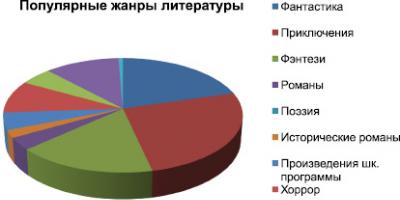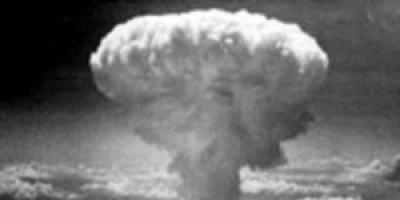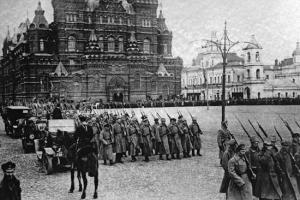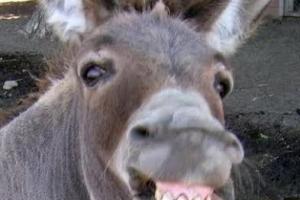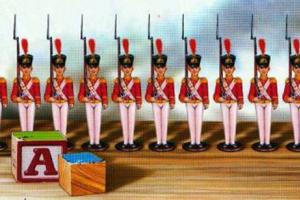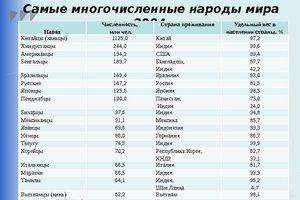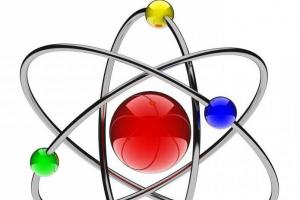The Silver Age of Russian poetry dates back to the beginning of the 20th century, although its beginning is the 19th century, and all its origins are in the “Golden Age”.
In fact, this is not even a century, it is a grandiose layer, in terms of the quantitative and qualitative composition of poets, which no other century can compare with.
The term “Silver Age” itself is figurative and very conventional. It was proposed (perhaps even as a joke) by the philosopher N. Berdyaev,
but they picked it up and firmly entered the literary community in the 60s of the twentieth century. The main feature is mysticism, a crisis of faith, inner spirituality, and conscience.
Poetry was the sublimation of internal contradictions, mental disharmony, mental illness.
All the poetry of the “Silver Age”, fully embodying the heritage of the Bible, the experience of world literature, ancient mythology, in heart and soul, turned out to be closely connected with Russian folklore, local folk tales and ditties, songs and laments. However, there is an opinion that the “Silver Age”- a Western phenomenon. Perhaps he embodied the pessimism of Schopenhauer, the aestheticism of Oscar Wilde, something of Alfred de Vigny, Nietzsche's superman. There is also an assumption that this is a “quality” name. There is a golden age with A.S. Pushkin, and there is a silver age, which did not reach the golden age in quality.
Works of poets of the Silver Age.
It was a creative world full of sunshine, thirsting for beauty and self-affirmation. And although the name of this time is “silver”, undoubtedly, it was the most striking and creative milestone in Russian history.
The names of the poets who formed the spiritual basis of the Silver Age are known to everyone: Sergei Yesenin, Valery Bryusov, Vladimir Mayakovsky, Alexander Blok, Maximilian Voloshin, Andrei Bely, Konstantin Balmont, Anna Akhmatova, Nikolai Gumilev, Marina Tsvetaeva, Igor Severyanin Boris Pasternak and many others.
In its most intense form, the essence of the Silver Age burst out at the beginning of the twentieth century. It was the rise of poetry in a variety of colors and shadows - artistic, philosophical, religious. Poets fought against attempts to link human behavior with the social environment and continued the trend of Russian poetry, for which a person was important as he is, important in his attitude to the Creator, in his thoughts and feelings, his personal attitude to eternity, to Love and Death in all manifestations and meanings. Six poets of the Silver Age especially succeeded in this - V. Mayakovsky, N. Gumilyov, S. Yesenin, A. Blok, A. Akhmatova, I. Severyanin.
They firmly believed in art, in the power of words. Therefore, their work is a deep immersion in the element of the word and is puzzled by the search for new means of word expression. They respected not only the meaning, but also the style - sound, word form and complete immersion in the elements were important to them.
It was expensive. Almost all the poets of the Silver Age were unhappy in their personal lives, and many of them came to a bad end. Although, by and large, almost all poets are not very happy in their personal lives, and in life in general.
“The Silver Age of Russian Poetry” is a surprisingly complex, but at the same time amazing canvas, with origins from the 90s of the 19th century.
The 19th century, which became a period of extraordinary growth of national culture and grandiose achievements in all spheres of art, was replaced by a complex 20th century, full of dramatic events and turning points. The golden age of social and artistic life gave way to the so-called silver age, which gave rise to the rapid development of Russian literature, poetry and prose in new bright trends, and subsequently became the starting point of its fall.
In this article we will focus on the poetry of the Silver Age, consider it and talk about the main directions, such as symbolism, acmeism and futurism, each of which was distinguished by its special verse music and a vivid expression of the experiences and feelings of the lyrical hero.
Poetry of the Silver Age. A turning point in Russian culture and art
It is believed that the beginning of the Silver Age of Russian literature falls on the 80-90s. XIX century At this time, the works of many wonderful poets appeared: V. Bryusov, K. Ryleev, K. Balmont, I. Annensky - and writers: L. N. Tolstoy, F. M. Dostoevsky, M. E. Saltykov-Shchedrin. The country is going through difficult times. During the reign of Alexander I, first there was a strong patriotic upsurge during the War of 1812, and then, due to a sharp change in the previously liberal policy of the tsar, society experienced a painful loss of illusions and severe moral losses.

The poetry of the Silver Age reached its peak by 1915. Social life and the political situation are characterized by a deep crisis, a turbulent, seething atmosphere. Mass protests are growing, life is becoming politicized, and at the same time personal self-awareness is strengthening. Society is making intense attempts to find a new ideal of power and social order. And poets and writers keep up with the times, mastering new artistic forms and offering bold ideas. The human personality begins to be perceived as a unity of many principles: natural and social, biological and moral. During the years of the February and October revolutions and the Civil War, the poetry of the Silver Age was in crisis.

A. Blok’s speech “On the appointment of a poet” (February 11, 1921), delivered by him at a meeting on the occasion of the 84th anniversary of the death of A. Pushkin, becomes the final chord of the Silver Age.
Characteristics of literature of the 19th - early 20th centuries.
Let's look at the features of the poetry of the Silver Age. Firstly, one of the main features of the literature of that time was a huge interest in eternal themes: the search for the meaning of the life of an individual and all of humanity as a whole, the mysteries of national character, the history of the country, the mutual influence of the worldly and spiritual, human interaction and nature. Literature at the end of the 19th century. becomes more and more philosophical: the authors reveal themes of war, revolution, personal tragedy of a person who, due to circumstances, has lost peace and inner harmony. In the works of writers and poets, a new, brave, extraordinary, decisive and often unpredictable hero is born, stubbornly overcoming all adversities and hardships. In most works, close attention is paid to how the subject perceives tragic social events through the prism of his consciousness. Secondly, a feature of poetry and prose has become an intensive search for original artistic forms, as well as means of expressing feelings and emotions. Poetic form and rhyme played a particularly important role. Many authors abandoned the classical presentation of the text and invented new techniques, for example, V. Mayakovsky created his famous “ladder”. Often, to achieve a special effect, authors used speech and language anomalies, fragmentation, alogisms, and even allowed

Thirdly, the poets of the Silver Age of Russian poetry freely experimented with the artistic possibilities of the word. In an effort to express complex, often contradictory, “volatile” emotional impulses, writers began to treat words in a new way, trying to convey the subtlest shades of meaning in their poems. Standard, formulaic definitions of clear objective objects: love, evil, family values, morality - began to be replaced by abstract psychological descriptions. Precise concepts gave way to hints and understatements. Such instability and fluidity of verbal meaning was achieved through the most vivid metaphors, which often began to be built not on the obvious similarity of objects or phenomena, but on non-obvious signs.

Fourthly, the poetry of the Silver Age is characterized by new ways of conveying the thoughts and feelings of the lyrical hero. Poems by many authors began to be created using images, motifs from various cultures, as well as hidden and explicit quotes. For example, many word artists included scenes from Greek, Roman and, a little later, Slavic myths and legends in their creations. In the works of M. Tsvetaeva and V. Bryusov, mythology is used to build universal psychological models that allow us to comprehend the human personality, in particular its spiritual component. Each poet of the Silver Age is brightly individual. You can easily understand which of them belongs to which verses. But they all tried to make their works more tangible, alive, full of colors, so that any reader could feel every word and line.
The main directions of poetry of the Silver Age. Symbolism
Writers and poets who opposed realism announced the creation of a new, modern art - modernism. There are three main poetry of the Silver Age: symbolism, acmeism, futurism. Each of them had its own striking features. Symbolism originally arose in France as a protest against the everyday reflection of reality and dissatisfaction with bourgeois life. The founders of this trend, including J. Morsas, believed that only with the help of a special hint - a symbol - can one comprehend the secrets of the universe. In Russia, symbolism appeared in the early 1890s. The founder of this movement was D. S. Merezhkovsky, who proclaimed in his book three main postulates of the new art: symbolization, mystical content and “expansion of artistic impressionability.”

Senior and Junior Symbolists
The first symbolists, later called the elders, were V. Ya. Bryusov, K. D. Balmont, F. K. Sologub, Z. N. Gippius, N. M. Minsky and other poets. Their work was often characterized by a sharp denial of the surrounding reality. They portrayed real life as boring, ugly and meaningless, trying to convey the subtlest shades of their feelings.

Period from 1901 to 1904 marks the advent of a new milestone in Russian poetry. The poems of the Symbolists are imbued with a revolutionary spirit and a premonition of future changes. Younger symbolists: A. Blok, V. Ivanov, A. Bely - do not deny the world, but utopianly await its transformation, chanting divine beauty, love and femininity, which will certainly change reality. It was with the appearance of younger symbolists in the literary arena that the concept of symbol entered literature. Poets understand it as a multidimensional word that reflects the world of “heaven,” the spiritual essence and at the same time the “earthly kingdom.”
Symbolism during the Revolution
Poetry of the Russian Silver Age in 1905-1907. is undergoing changes. Most symbolists, focusing on the socio-political events taking place in the country, reconsider their views on the world and beauty. The latter is now understood as the chaos of struggle. Poets create images of a new world that replaces the dying one. V. Ya. Bryusov creates the poem “The Coming Huns”, A. Blok - “The Barge of Life”, “Rising from the Darkness of the Cellars...”, etc.

The symbolism also changes. Now she turns not to the ancient heritage, but to Russian folklore, as well as Slavic mythology. After the revolution, the Symbolists split into those who wanted to protect art from the revolutionary elements and, on the contrary, those who were actively interested in the social struggle. After 1907, the Symbolist debate exhausted itself and was replaced by imitation of the art of the past. And since 1910, Russian symbolism has been going through a crisis, clearly displaying its internal inconsistency.
Acmeism in Russian poetry
In 1911, N. S. Gumilyov organized a literary group - the “Workshop of Poets”. It included the poets O. Mandelstam, G. Ivanov and G. Adamovich. This new direction did not reject the surrounding reality, but accepted reality as it is, affirming its value. The “Workshop of Poets” began to publish its own magazine “Hyperborea”, as well as publish works in “Apollo”. Acmeism, which originated as a literary school to find a way out of the crisis of symbolism, united poets who were very different in their ideological and artistic attitudes.

Features of Russian futurism
The Silver Age in Russian poetry gave birth to another interesting movement called “futurism” (from the Latin futurum, that is, “future”). The search for new artistic forms in the works of the brothers N. and D. Burlyuk, N. S. Goncharova, N. Kulbin, M. V. Matyushin became a prerequisite for the emergence of this trend in Russia.

In 1910, the futuristic collection “The Fishing Tank of Judges” was published, which collected the works of such outstanding poets as V.V. Kamensky, V.V. Khlebnikov, the Burliuk brothers, E. Guro. These authors formed the core of the so-called Cubo-Futurists. Later V. Mayakovsky joined them. In December 1912, the almanac “A Slap in the Face of Public Taste” was published. The cubo-futurists' poems "Lesiny Bukh", "Dead Moon", "Roaring Parnassus", "Gag" became the subject of numerous disputes. At first they were perceived as a way to tease the reader's habits, but a closer reading revealed a keen desire to show a new vision of the world and a special social involvement. Anti-aestheticism turned into a rejection of soulless, fake beauty, the rudeness of expressions was transformed into the voice of the crowd.

Egofuturists
In addition to cubo-futurism, several other movements arose, including ego-futurism, led by I. Severyanin. He was joined by such poets as V. I. Gnezdov, I. V. Ignatiev, K. Olimpov and others. They created the publishing house “Petersburg Herald”, published magazines and almanacs with original titles: “Sky Diggers”, “Eagles over the Abyss” , “Zakhara Kry”, etc. Their poems were extravagant and were often composed of words they themselves created. In addition to the ego-futurists, there were two more groups: “Centrifuge” (B. L. Pasternak, N. N. Aseev, S. P. Bobrov) and “Mezzanine of Poetry” (R. Ivnev, S. M. Tretyakov, V. G. Sherenevich).

Instead of a conclusion
The Silver Age of Russian poetry was short-lived, but it united a galaxy of the brightest, talented poets. Many of them had tragic biographies, because by the will of fate they had to live and work in such a fatal time for the country, a turning point of revolutions and chaos in the post-revolutionary years, civil war, collapse of hopes and revival. Many poets died after tragic events (V. Khlebnikov, A. Blok), many emigrated (K. Balmont, Z. Gippius, I. Severyanin, M. Tsvetaeva), some committed suicide, were shot or perished in Stalin’s camps. But they all managed to make a huge contribution to Russian culture and enrich it with their expressive, colorful, original works.
The beginning of the 20th century entered the history of literature under the beautiful name of the “Silver Age”. This period marked the great rise of Russian culture, which enriched poetry with new names. The beginning of the “Silver Age” occurred in the 90s of the 19th century; it is associated with the appearance of such wonderful poets as V. Bryusov, I. Annensky, K. Balmont. The heyday of this period in Russian culture is considered to be 1915 - the time of its highest rise.
We are aware of the disturbing historical events of this time. Poets, like politicians, tried to discover something new for themselves. Politicians sought social change, poets sought new forms of artistic reflection of the world. The classics of the 19th century are being replaced by new literary movements: symbolism, acmeism, futurism.
One of the first alternative literary movements was symbolism, which united such poets as K. Balmont, V. Bryusov, A. Bely and others. Symbolists believed that new art should convey the moods, feelings and thoughts of the poet with the help of symbolic images. At the same time, the artist learns about the world around him not as a result of reflection, but in the process of literary creativity - at the moment of creative ecstasy sent down to him from above.
Shadow of the Uncreated Creatures
sways in his sleep,
Like patching blades
On the enamel wall...
Half-asleeply draw sounds
In the ringing silence...
This is how the most prominent representative of symbolism, V. Bryusov, described the feeling of the birth of a creative idea. He formulated the ideas of this literary movement in his work. In the poem “To the Young Poet” we find the following lines:
A pale young man with a burning gaze,
Now I give you three covenants.
First accept: don’t live in the present,
Only the future is the domain of the poet.
Remember the second: don’t sympathize with anyone,
Love yourself infinitely.
Keep the third: worship art,
Only to him, thoughtlessly, aimlessly.
But these covenants do not mean that the poet should not see life, create art for art’s sake. This is proven by the multifaceted poetry of Bryusov himself, reflecting life in all its diversity. The poet finds a successful combination of form and content. He's writing:
And I want all my dreams to
Having reached the word and the light,
We found the traits we wanted.
Symbolists are characterized by a focus on the poet’s inner world. For K. Balmont, for example, the external world existed only so that the poet could express his own experiences in it:
I hate humanity
I run away from him in a hurry.
My united fatherland -
My desert soul.
This can be seen in the following lines, where Balmont’s appeal to the inner world is reflected not only in content, but also in form (frequent use of the pronoun “I”):
I dreamed of catching the passing shadows,
The fading shadows of the fading day,
I climbed the tower, and the steps trembled,
And the steps shook under my feet.
In the poetry of K. Balmont one can find a reflection of all his emotional experiences. It was they, according to the symbolists, who deserved special attention. Balmont tried to capture in an image, in words, any, even fleeting, sensation. The poet writes:
I do not know wisdom suitable for others,
I put only fleeting things into verse.
In every fleeting moment I see worlds,
Full of changing rainbow play.
In a dispute with symbolism, a new literary movement of the “Silver Age” was born - Acmeism. Poets of this movement - N. Gumilyov, A. Akhmatova, O. Mandelstam - rejected the craving of symbolism for the unknown, the poet’s excessive concentration on the inner world. They preached the idea of reflecting real life, the poet's appeal to what can be known. And by reflecting reality, the Acmeist artist becomes involved in it.
And indeed, in the works of Nikolai Gumilyov we find, first of all, a reflection of the surrounding world in all its colors. In his poetry we find exotic landscapes and customs of Africa. The poet penetrates deeply into the world of legends and traditions of Abyssinia, Rome, Egypt. The following lines speak about this:
I know funny tales of mysterious countries
About the black maiden, about the passion of the young leader,
But you inhaled the heavy fog for too long,
You don't want to believe in anything other than rain.
And how can I tell you about the tropical garden,
About slender palm trees, about the smell of incredible herbs.
You are crying? Listen... far away, on the lake
Chad Exquisite Giraffe Wanders
.
Each poem by Gumilev opens up a new facet of the poet’s views, his moods, and his vision of the world. For example, in the poem “Captains” he appears before us as a singer of courage, risk, courage. The poet sings a hymn to people who challenge fate and the elements:
The swift-winged ones are led by captains -
Discoverers of new lands,
For those who are not afraid of hurricanes,
Who has experienced malstroms and shoals.
Whose is not the dust of lost charters -
The salt of the sea soaks my chest,
Who is the needle on the torn map
Marks his daring path.
The content and exquisite style of Gumilyov's poems help us feel the fullness of life. They are confirmation that a person himself can create a bright, colorful world, moving away from the gray everyday life.
The poetry of Anna Akhmatova also introduces us to the world of beauty. Her poems amaze with the inner strength of feeling. Akhmatova’s poetry is both a confession of a woman’s soul in love and the feelings of a person living with all the passions of the 20th century. According to O. Mandelstam, Akhmatova “brought to Russian lyrics all the enormous complexity and psychological richness of the Russian novel of the 19th century.” Indeed, Akhmatova’s love lyrics are perceived as a huge novel in which many human destinies are intertwined. But most often we come across the image of a woman thirsting for love and happiness:
You can't confuse real tenderness
With nothing, and she is quiet.
You are in vain carefully wrapping
My shoulders and chest are covered in fur.
And in vain are the words submissive
You're talking about first love.
How do I know these stubborn
Your unsatisfied glances!
The new literary movement of the “Silver Age”, Futurism, which replaced Acmeism, was distinguished by its aggressive opposition to the traditional verses of the classical poets. The first collection of futurists was called “A Slap in the Face of Public Taste.” The early work of Vladimir Mayakovsky was associated with futurism. In the poet's early poems one can sense a desire to amaze the reader with the unusualness of his vision of the world. For example, in the poem “Night” Mayakovsky uses an unexpected comparison. The poet associates the illuminated windows of the night city with a fan of maps. The image of a city-player appears in the reader’s mind:
The crimson and white are discarded and crumpled,
They threw handfuls of ducats into the green,
And the black palms of the converging windows
Burning yellow cards were handed out.
Futurist poets V. Mayakovsky, V. Khlebnikov, V. Kamensky opposed themselves to classical poetry, they tried to find new poetic rhythms and images, to create the poetry of the future.
The poetry of the “Silver Age” reveals to us a unique and amazing world of beauty and harmony. She teaches us to see the beauty in the ordinary, to better understand the inner world of a person. And the searches by the “Silver Age” poets for new poetic forms, their rethinking of the role of creativity, give us a deeper understanding of poetry.
Silver Age of Russian Poetry
Preface and note by T. V. Nadozirnaya
Russian literature of the late 19th – early 20th centuries as the “Silver Age”
At the end of the 19th century, Russian culture entered a short but very intense stage, which later became known as the “turn of the century” or the “silver age”. The fundamental changes in artistic and aesthetic guidelines that marked this period are associated with a radical restructuring of human consciousness. The fact is that at the turn of the 19th – 20th centuries a number of discoveries were made in the field of natural sciences. The theory of relativity, the theory of magnetism, quantum and other large-scale discoveries have shaken many canons that seemed unshakable. Previous ideas about the Universe, which seemed incredibly complex but fundamentally knowable, were destroyed. The destruction of the usual picture of the world led to the emergence of a crisis of materialism and the positivist type of science. At the same time, the idea of the unknowability of the world has become extremely relevant. As a result, a feeling of instability and fragility of traditional values arose, which led people to think about the crisis of their era and the need to “reassess values.” Under these conditions, a new type of culture arose - modernism.
The modernist type of culture manifested itself especially clearly in literature. This was expressed in a radical renewal of literary techniques. Russian poetry was most clearly updated, which was especially noticeable against the backdrop of the very powerful, but predominantly prosaic literature of the second half of the 19th century. Later, poetry at the turn of the 19th and 20th centuries was called the “Silver Age”. This term arose by analogy with the concept of the “golden age,” traditionally denoting the “Pushkin period” of Russian literature. At first, the concept of “Silver Age” was used to characterize the peak manifestations of poetry of the early twentieth century - the work of D. Merezhkovsky, K. Balmont, A. Blok, A. Akhmatova, O. Mandelstam and other brilliant masters of words. However, over time, it began to be used to characterize modernist literature in general. At the moment, this term is used as a synonym for the concept of “turn-of-the-century culture.”
Today there is no consensus on the chronological boundaries of turn-of-the-century literature. At the beginning of the last century, the outstanding Russian scientist S. A. Vengerov, who, together with the most famous scientists and writers of his time, compiled the first essay of the three-volume “History of Russian Literature of the 20th Century” (1914), began a new period in the 90s of the 19th century. Because it was at this time that human consciousness was significantly restructured. This point of reference was accepted and became commonplace in literary criticism. As for the question of when the “Silver Age” ended, the opinions of researchers are divided. There are several most common points of view. Soviet literary criticism began with the October Revolution (1917). At the same time, the work of L. Tolstoy, A. Chekhov and other artists who worked in the first ten to twenty years of the new century was attributed to the 19th century. Therefore, the chronological framework of the literature of the turn was determined as follows: 1890s - 1917. Modern researchers have come to the completely logical conclusion that the picture of the literary process could not change overnight. The October Revolution of 1917, as a result of which a coup d'etat took place, not only did not stop the development of a wide variety of literary movements and trends, but, on the contrary, stimulated their further development. In this regard, some modern scholars are expanding the chronological framework of turn-of-the-century literature to the early 1920s. However, there are those who believe that the era of the “Silver Age” ends in 1925, since it was then that the resolution “On Party Policy in the Field of Fiction” was adopted, indicating state control over literature and marking the onset of a new period.
Modernism, which incorporated many unrealistic trends and trends, had a huge influence on the literary process in the twentieth century. Three of them showed themselves most clearly - symbolism, acmeism and futurism. The most significant phenomenon of Russian modernism was symbolism (D. Merezhkovsky, Z. Gippius, K. Balmont, V. Bryusov, A. Blok, etc.). However, already in the 1910s they started talking about its crisis. Soon, in 1913, a new direction appeared - Acmeism (N. Gumilev, A. Akhmatova, O. Mandelstam, S. Gorodetsky, etc.). Around the same time, Russian futurism was formed (I. Severyanin, V. Khlebnikov, V. Mayakovsky, etc.). A striking event in Russian literary life was the appearance of the so-called “new peasant poetry” (S. A. Yesenin, N. A. Klyuev, S. A. Klychkov, etc.). In addition, a number of poets “outside the directions” appeared, whose work did not fit into the framework of a specific literary movement (M. Kuzmin, M. Voloshin, M. Tsvetaeva, etc.).
Symbolism
Symbolism is the first modernist movement in European literature. It originated in France in the 1870s. The first symbolist poets were P. Verlaine, S. Mallarmé, A. Rimbaud. In Russia, symbolism became the most significant modernist movement.
Several groups have formed within the framework of Russian symbolism. According to the time of formation, it is customary to divide the Symbolists into two groups: the “elders” who made themselves known in the 1890s (V. Bryusov, K. Balmont, D. Merezhkovsky, Z. Gippius, F. Sologub, etc.), and “ younger”, who began their creative activity a little later - in the 1900s (A. Blok, A. Bely, V. Ivanov, etc.).
Quite often, Russian symbolists are classified according to their common ideological position. On this basis, three groups are distinguished: “decadents”, or St. Petersburg symbolists (D. Merezhkovsky, Z. Gippius, F. Sologub, etc.), senior symbolists, or Moscow (V. Bryusov, K. Balmont, etc.), younger Symbolists (A. Blok, A. Bely).
It is believed that the beginning of Russian symbolism was laid by the article of the writer and poet D. Merezhkovsky “On the causes of the decline and on new trends in modern Russian literature,” which was written in 1892. In it, the author stated that modern literature is in a state of crisis because it is focused on the temporary, the momentary. Meanwhile, according to Merezhkovsky, art should first of all turn to the timeless, eternal. “New art” is capable of this, based on three elements: mystical content, expansion of artistic impressionability and images-symbols.
The worldview of the Symbolists was influenced by a wide variety of philosophical systems - from ancient to modern. However, all these teachings are united by the idea of the existence of the so-called “highest reality” (superreality) and the reality given to us in sensations. The goal of the symbolists is to reflect the true, highest reality, that is, to see the timeless and eternal in the momentary and passing. According to their ideas, this can be done with the help of an image-symbol, since it has a unique structure that can reflect the entire complexity of the world universe. In addition, the symbolists believed that only a select few, endowed with a special gift to discern the true nature of existence, could comprehend superreality.
Thus, the symbol is the central and main category of symbolism as an artistic and aesthetic movement. It is very important to understand how a symbolic image differs from tropes. A trope refers to words and expressions that are used figuratively in order to enhance the figurativeness of language. The basis of any trope is a comparison of objects and phenomena. At the same time, there is a difference between the direct meaning and the figurative meaning of the trope. The nature of the trope is such that the direct meaning is, as it were, destroyed, and we perceive its secondary signs, which gives a certain artistic “increment” of thought, enriching it with new content. For example, when using the expression “golden hands,” the direct meaning (“hands made of gold”) is destroyed, giving way to a figurative meaning—“a person who knows how to do everything well.” Moreover, here the direct meaning plays, in fact, a subordinate role. The hands can be called, for example, diamonds - this will not change the figurative meaning. An image-symbol, unlike a trope, is deprived of its main quality - “portability of meaning”. For a symbol, the direct meaning is fundamentally important. This is due to the ideas of the symbolists that the whole world is permeated by a system of correspondences, and the purpose of art is precisely to, with the help of supersensible intuition, discover the connection between the superreal and the real and reflect this with the help of a symbol.
In addition, the trope assumes a more or less unambiguous reading, since an abstract idea, feeling or moral idea in it is replaced by an image, a “picture”. And the image-symbol, on the contrary, is fundamentally polysemantic and contains the prospect of limitless development of meanings. So, modernist Vyach. Ivanov argued: “A symbol is only a true symbol when it is inexhaustible in its meaning.” So, the snake symbolizes not only wisdom, otherwise it would be a simple allegory. In different contexts, the image-symbol of a snake takes on different meanings: wisdom, temptation, death, knowledge, etc.
The literature of the Silver Age in Russia, created at the turn of the 19th and 20th centuries, represents an important part of the artistic heritage of our country. This time was characterized by the presence of many different directions and trends, ideological inconsistency, inherent not only in various authors, but also taking place even in the work of individual writers, composers, and artists. During this period, there was a renewal and rethinking of many types and genres of creativity. As noted by M.V. Nesterov, there was a “general revaluation of values.”
Even among progressive thinkers and cultural figures, there was an ambivalent attitude towards the creative heritage left by the revolutionary democrats.
Decadence
In general, and the literature of the Silver Age in Russia in particular at the turn of the 19th and 20th centuries was marked by the widespread spread of decadence (“decadence”), which proclaimed faith in reason, the loss of civil ideals, and a retreat into personal, individual experiences. Thus, some part of the intelligentsia sought to “escape” the difficulties of life into the world of unreality, dreams, and sometimes mysticism. This process took place because at that time there was a crisis in public life, and artistic creativity only reflected it.
Decadence captured even representatives of realistic movements. However, most often such ideas were still characteristic of representatives of modernist movements.
Modernism and realism in art
The term "modernism" is applied to many types of art of the 20th century. It appeared at the beginning of the century, and its predecessor was realism. However, by that time the latter had not yet become a thing of the past; thanks to the influence of modernism, new features arose in it: the “framework” of the vision of life expanded, and the search for means of personal self-expression in artistic creativity began.
The most important feature of the art of the early 20th century is synthesis, the unification of various forms.
Turn of the century literature
Back in the 90s of the 19th century, directions emerged in Russian literature that were opposed to the prevailing realism at that time. The main one was modernism. Many writers of the Silver Age (we will consider the list, directions and their main representatives below) one way or another came out of realism. They continued to create, creating new trends and directions.
Modernism
The literature of the Silver Age in Russia opens with modernism. It brought together various poets and writers, sometimes very different in their ideological and artistic appearance. At that time, active modernist quests began, inspired in many ways by F. Nietzsche, as well as some Russian writers, for example A.A. Kamensky, M.P. Artsybashev and others. They proclaimed the freedom of literary creativity, called themselves its priests, and preached the cult of the “superman”, who renounced social and moral ideals.
Symbolism
As a movement, symbolism in Russia took shape at the turn of the 19th and 20th centuries. There are “senior” symbolists, which include V. Bryusov, F. Sologub, K. Balmont, Z. Gippius and others, who were the first to create in this direction. Younger representatives include the writers of the Silver Age A. Bely, V. Ivanov, S. Solovyov, A. Blok and others. The theoretical, aesthetic and philosophical foundations of this movement were very diverse. For example, according to V. Bryusov, symbolism was a purely artistic movement, and Merezhkovsky took Christianity as a basis; Vyacheslav Ivanov relied on the aesthetics and philosophy of antiquity as interpreted by Nietzsche, and A. Bely was fond of the works of Schopenhauer, Nietzsche, Kant, V. Solovyov. The ideology of the “younger” symbolists is based on the philosophy of V. Solovyov with the idea of the coming of Eternal Femininity and the Third Testament.
The symbolists left a legacy of both poetry, prose, and drama. But the most characteristic was poetry, in various genres of which many Silver Age writers worked in this direction.
V.Ya. Bryusov
Creativity V.Ya. Bryusov (1873-1924) was marked by many ideological quests. The revolutionary events of 1905 aroused his admiration and marked the beginning of the poet's departure from symbolism. However, Bryusov did not immediately choose a new direction, as he formed his attitude towards the revolution, which was very contradictory. The poet joyfully welcomed the forces that, in his opinion, were supposed to cleanse Russia of previous principles and beliefs and put an end to the old world. However, in his work he also noted that this elemental force brings destruction. "To break - I will be with you! To build - no!" - wrote V.Ya. Bryusov.
His work is characterized by a desire for a scientific understanding of life, a revival of interest in history, which was shared by other writers of the Silver Age (the list of representatives of symbolism was indicated above).
Realism
The ideological contradictions characteristic of the era as a whole also influenced some realist writers. For example, in the works of L.N. Andreev reflected a departure from realistic principles.

But in general, realism has not disappeared. The literature of the Silver Age, whose poets came out of realism, retained this direction. The fate of an ordinary person, various social problems, life in many of its manifestations were still reflected in culture. One of the greatest representatives of realism at that time was the writer A. Bunin (1870-1953). In the difficult pre-revolutionary times, he created the stories “Village” (in 1910) and “Sukhodol” (in 1911).

Acmeism
In 1910, there was a controversy surrounding symbolism, and its crisis emerged. This direction is gradually being replaced by acmeism (“acme” translated from Greek means the highest degree, the blooming time). The founders of the new movement are considered to be N.S. Gumilyov and This group also included Silver Age writers O.E. Mandelstam, M.A. Kuzmin, V. Khodasevich, A.A. Akhmatova, M.A. Zenkevich and others.
In contrast to some vagueness and nebulosity of symbolism, the Acmeists proclaimed earthly existence and a “clear view of life” as their support. In addition, the acmeistic literature of the Silver Age (whose poets and writers have just been listed) introduced an aesthetic-hedonistic function into art, trying to escape social problems into poetry. Decadent motives are clearly audible in Acmeism, and philosophical idealism became the theoretical support of this movement. Some Russian writers of the Silver Age went further in their work, which acquired new ideological and artistic qualities (for example, A.A. Akhmatova, M.A. Zenkevich, S.M. Gorodetsky).
In 1912, the collection “Hyperborea” was published, in which the new announced itself for the first time. The Acmeists considered themselves the successors of symbolism, about which Gumilev said that it had “finished its circle of development,” and proclaimed a rejection of rebellion, the struggle to change living conditions, which was often expressed in the literature of the Silver Age.
Writers - representatives of Acmeism tried to revive the concreteness and objectivity of the image, to cleanse it of mysticism. However, their images are very different from realistic ones, as S. Gorodetsky put it, they seem to be “... born for the first time” and appear as something hitherto unprecedented.
A.A. Akhmatova

A.A. occupies a special place in the work of this direction. Akhmatova. The first collection of her poems, “Evening,” appeared in 1912. It is characterized by restrained intonations, psychologism, intimate themes, emotionality and deep lyricism. A.A. Akhmatova clearly proceeded from the idea of the “primordial Adam” proclaimed by the Acmeists. Her work is characterized by love for man, faith in his capabilities and spiritual strength. The bulk of this poetess’s work dates back to the Soviet years.
Akhmatova's first two collections, the aforementioned "Evening" and "The Rosary" (1914), brought her great fame. They reflect an intimate, narrow world, in which notes of sadness and sadness can be discerned. The theme of love here, the most important and the only one, is closely connected with suffering caused by biographical facts from the life of the poetess.
N.S. Gumilev

The artistic heritage of N.S. is great and significant. Gumilyov. In the work of this poet, the main themes were historical and exotic, and he also glorified the “strong personality.” Gumilyov developed the form of verse, made it more accurate and precise.
The work of the Acmeists was not always opposed to the Symbolists, because in their works one can also find “other worlds” and a longing for them. Gumilyov, who at first welcomed the revolution, a year later was already writing poems about the death of the world, the end of civilization. He suddenly understands the devastating consequences of war, which can become disastrous for humanity. In his poem "Worker" he seems to foresee his death from a shot from a proletarian, a bullet, "that will separate me from the earth." Nikolai Stepanovich was shot allegedly for participating in a counter-revolutionary conspiracy.
Some poets and writers of the Silver Age - representatives of Acmeism - subsequently emigrated. Others were never able to do this. For example, Anna Andreevna Akhmatova, wife of N.S. Gumilyov, did not accept the Great October Revolution, but refused to leave her native country. These events left a big mark on her soul, and the poetess was not immediately able to return to creativity. However, the outbreak of the Great Patriotic War again awakened in her a patriot, a poet, confident in the victory of her country (works “Courage”, “Oath” and others).
Futurism
At the same time as Acmeism (that is, in 1910-1912), Futurism emerged. It, like other directions, was heterogeneous, highlighting several currents. The largest of them, Cubo-Futurism, united the poets V.V. Mayakovsky, V.V. Khlebnikova, D.D. Burlyuk, V.V. Kamensky, and others. Another type of futurism was egofuturism, represented by the work of I. Severyanin. The Centrifuge group included poets who were beginning at that time and B.L. Pasternak, as well as other writers of the Silver Age.
Futurism revolutionized form, which now became independent of content, proclaimed freedom of speech, completely abandoning literary continuity and traditions. The Futurist manifesto “A Slap in the Face of Public Taste,” published in 1912, called for the overthrow of such great authorities as Tolstoy, Pushkin and Dostoevsky from their pedestal.
Writers of the Silver Age of Russian literature V.V. Kamensky and V. Khlebnikov were able to conduct successful experiments with words, which influenced the further development of Russian poetry.
V.V. Mayakovsky

The great poet V.V. began to create among the futurists. Mayakovsky (1893-1930). In 1912, his first poems were published. Mayakovsky was not only against “all sorts of old things,” but also proclaimed the need to create something new in public life. Vladimir Vladimirovich had a presentiment of the October Revolution, denounced the kingdom of the “fat”, which was reflected in his poems “War and Peace”, “Cloud in Pants”, “Man”, “Spine Flute”, which denied the entire capitalist system and proclaimed faith in person.
Other poets and writers of the Silver Age
In the years preceding the revolution, there were other bright poets and writers of the Silver Age of Russian literature, who are difficult to attribute to one direction or another, for example M.A. Voloshin and M.I. Tsvetaeva. The latter’s creativity is characterized by demonstrative independence, as well as rejection of generally accepted behavioral norms and ideas.

Russian culture of this time was the result of a long and complex path. Its integral features invariably remained high humanism, nationalism and democracy, despite the high pressure of government reaction. More detailed information can be found in any textbook ("Literature", 11th grade). The Silver Age is necessarily included in the school curriculum.

